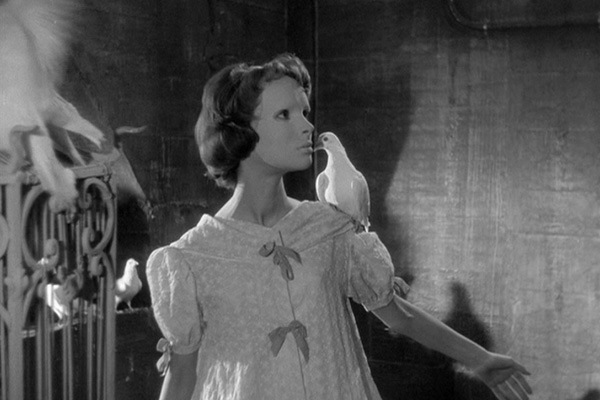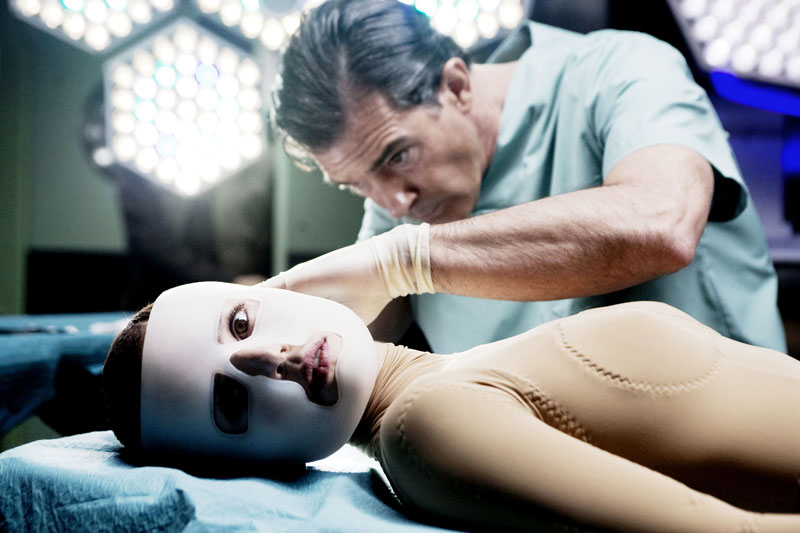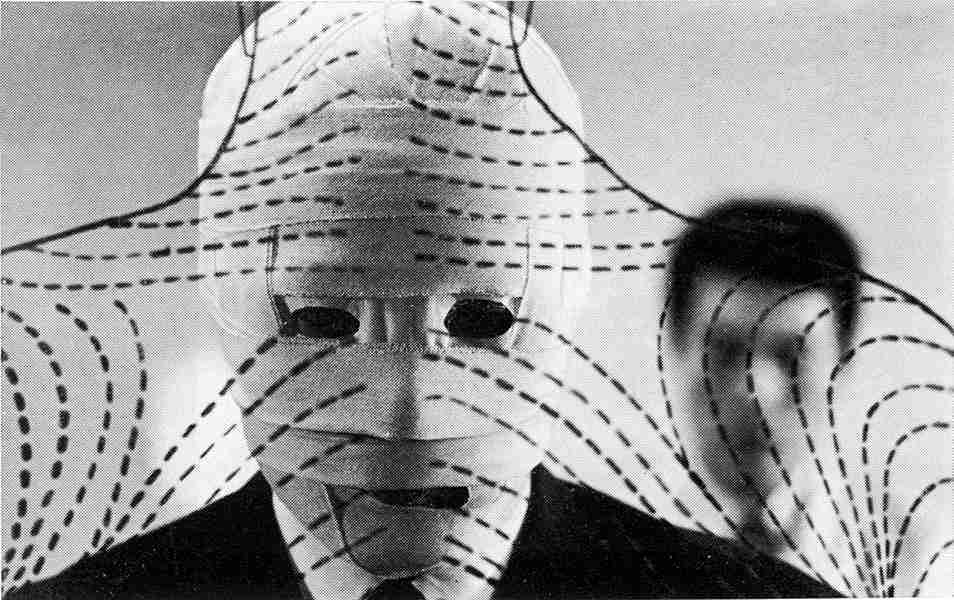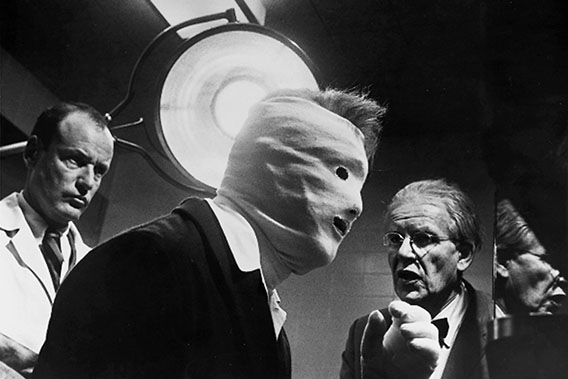5. Eyes Without A Face (Georges Franju, 1960)

Co-founder of the Cinematheque Française and director Georges Franju never considered “Eyes Without A Face” to be a horror story; instead, he called it a tale of “anguish”.
Professor Dr. Genessier (Pierre Brasseur) causes a car accident which leaves his daughter Christiane’s (Edith Scob) face destroyed. In an attempt to give her another face, Dr. Genessier orders his assistant Louise (Alida Valli) to capture young women who resemble his daughter, in order to transplant their face onto hers.
This modernist Frankensteinian tale embodies the ghastly icy monochromatic cinematography of misty Paris, chilling the spines of audiences for decades.
Christiane’s wandering through the empty mansions, and especially her caressing of the locked up experiment dogs, is a haunting experience which is hard to forget. Her evocative mask is referenced and paid homage to great extent in pop culture. The entire film has been a great influence on filmmakers of many generations, including John Carpenter and Pedro Almodovar.
4. The Skin I Live In (Pedro Almodóvar, 2011)

Pedro Almodovar spent more than 10 years writing the screenplay of this R-rated loosely based adaptation.
Robert Ledgard (Antonio Banderas), one of the most prominent plastic surgeons of his time, keeps a woman named Vera (Elena Anaya) locked up in a room inside his mansion, treating her as a guinea pig for his research to create damage-resistant skin.
As the narrative shifts to a more violent tone, we flashback to uncover their inauspicious relationship.
Banderas fits the skin he is given by Almodovar perfectly. His menacing portrayal is sad and scary at the same time, embodying his insanity in the shell of the audience’s empathy.
You cannot possibly be prepared for where this Thierry Jonquet novel adaptation takes you. The melodramatic elements capture you away to a state where the plot twist is as shocking as “Vertigo” or “Psycho” were for their time.
Without wanting to spoil this must-watch film, it’s fair to conclude that it is about identity, about being who you are, no matter how much you change your outside appearance.
3. Brazil (Terry Gilliam, 1985)

As part of the legendary surreal comedy group Monty Python, one would be pretty confident in suspecting a little joke at the release year from Terry Gilliam for his dystopian satire masterpiece.
Sam Lowry (Jonathan Pryce) is a technocrat in a steampunk bureaucratic future dystopia, who dreams of flying. A type error is responsible for the capture and murder by state authority of our hero’s neighbor. In an attempt to fix this mistake, Sam is tangled with the real wanted criminal anarchist, Harry Tuttle (Robert De Niro), and is now himself an enemy of the system.
This Orwellian black comedy, with an unforgettable soundtrack and marvelous production design inspired by Fritz Lang, is a cult classic.
Gilliam infuses the film’s 132 minutes with multiple nuances of humor, paranoia, tragedy, love and suppressed anger.
In “Brazil”, plastic surgery is portrayed as a cosmetic ideology. All the older women, especially Sam’s mother, Ida Lowry (Katherine Helmond), are obsessed with competing against each other with their youth. Their interventions are lifted to comical proportion, sometimes with fatal consequences, as one of Mrs. Lowry’s friends dies from it.
2. The Face of Another (Hiroshi Teshigahara, 1966)

This is the third adaptation by a Kobo Abe novel from Hiroshi Teshigahara, after his masterpiece, “Women in the Dunes”, and the fantastic “Pitfall”.
An industrial accident, which saw Okuyama’s (Tatsuya Nakadai) face burned off, has left the businessman in social isolation. After excessive plastic surgery, he gains the face of another person. With this new identity he is freed of societal constraints, and he engages in a game of seducing his own wife (Machiko Kyo).
In “The Face of Another”, Teshigahara deals with the tenuousness of identity, the existential dilemma of individual versus community, and the nature of freedom. The visual correlation to this are the themes of the doppelgänger, the set design trickery of mirrors, and the repetition of shots.
The legendary Tatsuya Nakadai has always been an actor who makes excessive use of his facial features, and the fact that he manages to shine in a role that requires him to wear bandages in almost half the film even more brilliant and confirms him once again as a virtuous performer.
Coincidentally, our number one pick was also released in 1966…
1. Seconds (John Frankenheimer, 1966)

There are two John Frankenheimers; the one who made “The Manchurian Candidate”, and the one who made “The Island of Dr. Moreau”. In the David Ely based adaptation, “Seconds”, we have the former.
Middle-aged banker Arthur Hamilton (John Randolph) gets a shocking call from his believed to be deceased friend Charlie. Hamilton is given an address, where he should present himself as Wilson. When he arrives there, to his surprise, he finds a meat packing factory. Quickly, he is driven to the real location of this mysterious company, which will blackmail him into faking his own death, and will give him a new life and identity as Antiochus Wilson (Rock Hudson).
From the very beginning, which also includes titles by Saul Bass, Frankenheimer dives the mood into uncanny waters with decomposed close-ups, peculiar angles and an organ-centered soundtrack. Never praised to the heights he deserved, this live television schooled director operated the corporate paranoia of the 1960s audience with a timeless surreal experience in “Seconds”.
Rounding things up is a humbly ambiguous performance by Rock Hudson, which culminates in a callback of an early quote from the corporation director, “The question of death selection might be the most important in your life”.
Author Bio: Zgjim Terziqi is a film school graduate screenwriter and director from Kosovo. As an autodidactic child, he learned fluent English and German by watching films in the respective language.